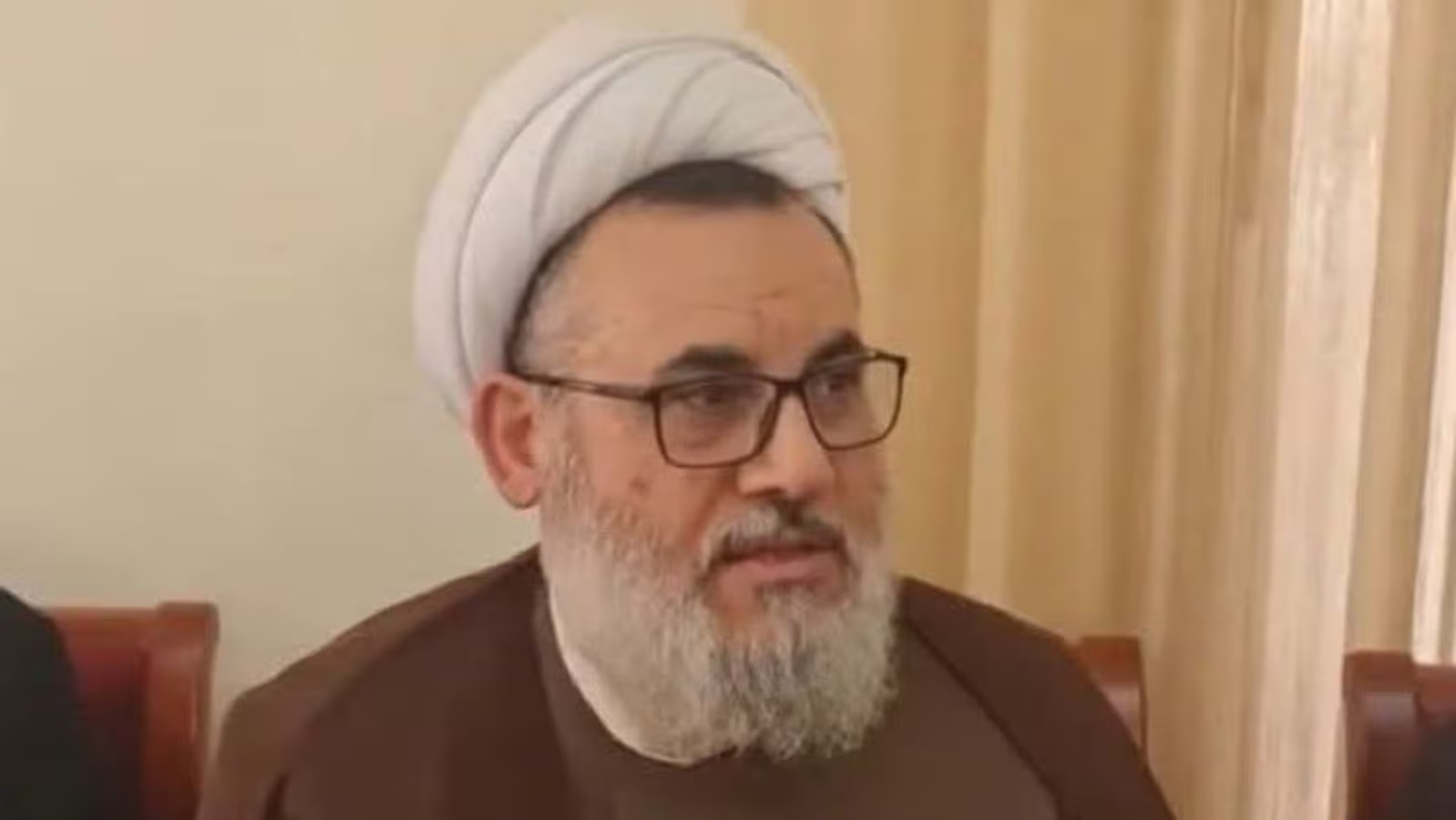Sheikh Hammadi, a senior commander of the Lebanese militant group Hezbollah, was shot dead in a dramatic assassination outside his home in eastern Lebanon.
Hammadi’s death, reportedly stemming from a family feud rather than political motives, has sparked widespread speculation and renewed attention to his controversial past.
Known for his involvement in the 1985 hijacking of a West German airplane and the killing of an American passenger, Hammadi remained a significant figure on the FBI’s most-wanted list.
The Assassination of Sheikh Hammadi
The incident occurred on Tuesday night, with reports confirming that sheikh Muhammad Ali Hammadi was killed instantly after being shot six times by unidentified gunmen. The assailants targeted Hammadi outside his residence, marking a violent and public end to the life of a man who had long been associated with Hezbollah’s military operations and political activities.
Local sources have dismissed any immediate political angle to the killing, attributing it instead to a family feud that had reportedly been simmering for years. However, the high-profile nature of the assassination and Hammadi’s contentious history have fueled suspicions of deeper motivations, including potential rivalries within Hezbollah or external vendettas.
Read : 19-Year-Old Palestinian Man Stabbed Israeli Man on Levontin Street: Shot Dead By Civilian
Hammadi’s death comes at a time of fragile stability in the region, coinciding with a tenuous ceasefire agreement between Israel and Hezbollah. His assassination has cast a shadow over the group’s leadership and raised questions about internal security within its ranks.
Hammadi’s Notorious Past and Global Infamy
Sheikh Muhammad Ali Hammadi first gained international notoriety in 1985 when he was involved in the hijacking of TWA Flight 847, a West German plane carrying 153 passengers.
During the hijacking, Hammadi and his accomplices subjected the passengers to extreme physical and psychological torment. The ordeal culminated in the brutal murder of an American passenger, Robert Stethem, a U.S. Navy diver who was singled out and executed in a highly publicized act of terror.

Following the hijacking, Hammadi managed to evade capture for several years before being arrested in Germany in 1987. Convicted of hijacking and murder, he was sentenced to life imprisonment but was controversially released in 2005 after serving just 19 years. His release was widely criticized, particularly by the United States, which had sought his extradition for years.
Read : Terrorists Target Churches in Russia: 15 Killed, Including Priest – Video Included
Hammadi’s release and subsequent return to Lebanon marked a significant chapter in Hezbollah’s history. Despite his past, he resumed an active role within the group, serving as a senior commander and remaining a key figure in its military operations.
His continued involvement in Hezbollah’s activities ensured that he remained a high-profile target, both for his enemies within Lebanon and for international intelligence agencies.
The Regional Context and Hezbollah’s Challenges
Hammadi’s assassination comes at a critical juncture for Hezbollah, which has faced mounting pressure both domestically and internationally. The group’s involvement in the Syrian Civil War, as well as its ongoing tensions with Israel, has strained its resources and tested its leadership.
In 2023, Hezbollah aligned itself with Hamas during its conflict with Israel, intensifying hostilities across the region. Israel responded with a series of targeted operations aimed at dismantling Hezbollah’s supply chains and eliminating its leadership.
These operations resulted in significant losses for the group, including the deaths of several senior commanders and disruptions to its logistical network.
The ceasefire agreement brokered between Israel and Lebanon has provided a temporary reprieve from active conflict, but the underlying tensions remain unresolved. Hammadi’s assassination has further complicated this delicate balance, raising concerns about the potential for renewed violence.
Hezbollah’s internal dynamics are also under scrutiny, as the group grapples with challenges to its authority and cohesion. Hammadi’s death, whether the result of a personal feud or a calculated act of revenge, underscores the vulnerabilities within its ranks.
For a group that prides itself on discipline and loyalty, such incidents highlight the complexities of maintaining unity in a volatile and politically charged environment.
The killing of Sheikh Muhammad Ali Hammadi is a stark reminder of the challenges facing Hezbollah and the broader implications for regional stability.

While local reports suggest a personal motive behind the assassination, the incident has broader ramifications, shedding light on the precarious nature of Hezbollah’s leadership structure and its position within Lebanon’s political landscape.
As Hezbollah navigates this latest crisis, the international community will undoubtedly monitor the situation closely. Hammadi’s death not only removes a controversial figure from the scene but also raises questions about the group’s ability to maintain its influence and cohesion in the face of mounting internal and external pressures.
For Lebanon, a nation already grappling with economic turmoil and political instability, the assassination adds another layer of uncertainty. The ripple effects of Hammadi’s death may extend beyond Hezbollah, impacting the broader dynamics of power and conflict in the region.
In the coming weeks and months, the true implications of Hammadi’s assassination will become clearer. Whether it leads to further unrest or serves as a catalyst for internal reform within Hezbollah, the incident marks a significant moment in the group’s history and its ongoing struggle to navigate a complex and ever-changing landscape.
let’s enjoy few years on earth with peace and happiness….✍🏼🙏

